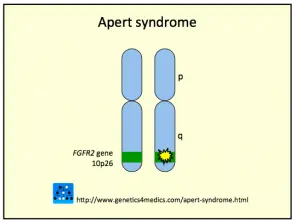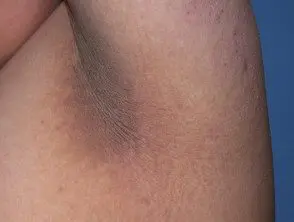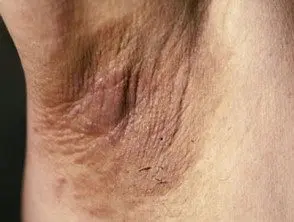What is Crouzon? syndrome?
Crouzon syndrome is characterized by a variety of developmental and craniofacial symptoms.
Is a hereditary inherited condition in a autosomal dominant pattern (an abnormal gene from one parent can cause the syndrome). Also known as Crouzon disease, craniofacial dysostosis, craniostenosis, Apert-Crouzon syndrome, type II acrocephalosyndactyly, Vogt's cephalosinodiactyly, and trigorinophalangeal. dysplasia.
It was first described by Crouzon in 1912.
Who gets Crouzon syndrome?
Crouzon syndrome is rare, although it is still the most common craniosynostosis syndrome (where the fibrous joints of the skull close prematurely during childhood).
- It affects 1 in 60,000 live births.
- It appears to be equally diagnosed in people of all races and ethnicities.
- It is often diagnosed at birth or in childhood due to distinctive facial features.
What causes Crouzon syndrome?
Crouzon syndrome is usually caused by mutations at fibroblasts growth factor receiver 2 (FGFR2) gen. the FGFR3 gene may also be involved.
- Is mutation it signals immature cells to become bone cells during embryogenesis.
- A family history of Crouzon syndrome is present in 50% cases.
- In the other 50% cases, the syndrome is sporadic, as a result of new genetic mutations.
Genetics of Crouzon syndrome *

Crouzon syndrome2
* Image courtesy of Genetics 4 Medics
What are the clinical features of Crouzon syndrome?
The clinical features of Crouzon syndrome vary widely and range from mild to severe. The key feature is premature closure of the skull cap and cranial base sutures, and craniosynostosis.
Facial features
Related distinctive facial features include:
- Exophthalmos (abnormal protrusion of the eyeball)
- Hypertelorism (excessive width between the eyes)
- Hypoplastic maxilla (an underdeveloped jaw)
- Mandibular prognathism (protrusion of the lower jaw)
- A short upper lip
- A peak nose.
Visual defects
Visual defects associated with Crouzon syndrome include:
- Amblyopia (darkness of sight with no apparent change in eye structures)
- Ametropia (refractory error)
- Strabismus (inability to reach binocular vision due to muscle imbalances in the eyeballs).
These visual defects are due to corneal injury, waterfalls (a clouding of the lens of the eye or the transparent membrane around it), optical atrophy (deterioration of the optic nerve) and coloboma of the iris (a hole in the iris).
Other features
Other features associated with Crouzon syndrome include:
- Decreased mental function and increased risk intracranial pressure and seizures
- Respiratory symptoms due to narrowing of the nasopharyngeal step and deviated pulp or other structural abnormalities
- Hearing loss and / or Ménière disease (a disorder of the inner ear characterized by episodes of Vertigo, ringing in the ears, hearing loss and pressure in the ear)
- Skeletal abnormalities, including fusion of the spine.
The main dermatological sign of Crouzon syndrome is acanthosis nigricans, in which there is thickened, hyperpigmented skin with a velvety sensation that affects the neck, torso and face. It usually appears at the beginning of puberty.
Acanthosis nigricans *

Acanthosis nigricans

Acanthosis nigricans

Acanthosis nigricans
How is Crouzon syndrome diagnosed?
Crouzon is confidently diagnosed in a child with craniosynostosis when mutations in the FGFR2 Genes are detected. the genes Parents of the affected individual may also be tested for mosaicism (which has cells of two or more genetically different types).
How is Crouzon syndrome treated?
Standard treatment for Crouzon syndrome includes early craniectomy (surgical removal of a portion of the skull) and cosmetic reconstruction to help promote normal facial growth.
Multidisciplinary care can include medical and surgical evaluation and symptom management. This may include:
- Ophthalmological treatment of amblyopia, ametropia and strabismus
- Audiological treatment and myringotomy for hearing loss.
- Referral to treat intracranial pressure due to hydrocephalus (increased cerebrospinal fluid within the cranial cavity)
- Tracheostomy (a incision in the trachea) to treat airway obstruction
- Orthodontic surgery to treat irregularities in teeth and jaws.
What is the prognosis for Crouzon syndrome?
Improvements in surgical techniques, specifically in craniofacial surgery, have greatly increased the quality of life, the intellectual and physical capacities, and the social acceptance of children with Crouzon syndrome.
The lifespan of people with Crouzon syndrome is generally normal, but mortality can occur due to obstruction of the airways, acute respiratory distress or increased intracranial pressure.

